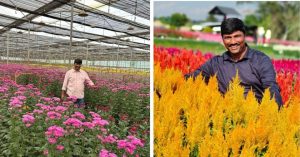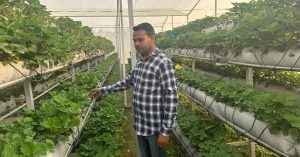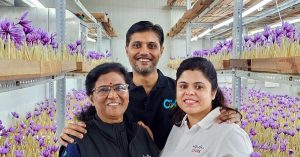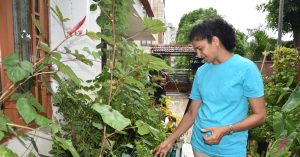Organic Farmer Uses Cow Dung to Make Recyclable Sculptures & Torans that Can Last 10 Yrs
P Ganesan, an organic farmer, has been making artefacts for the past five years, using nothing but cow dung and cow urine. He creates both utility and decorative items, which can last up to 10 years.
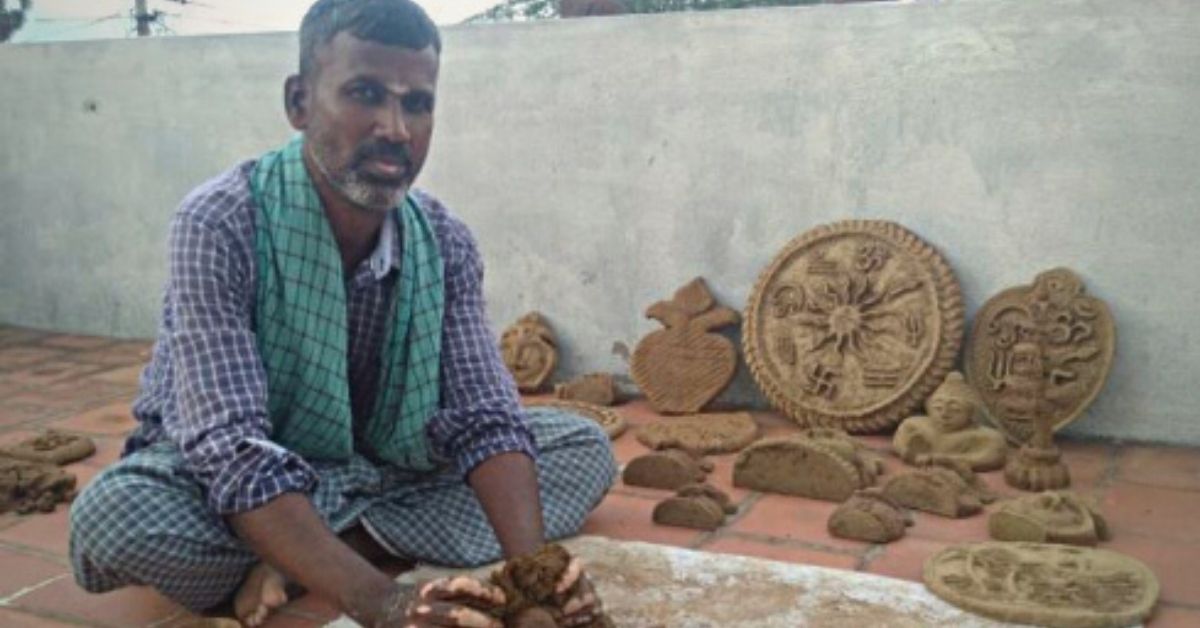
Organic farmer P Ganesan from Perungamanallur village in Madurai, Tamil Nadu, is well-versed in all aspects of agriculture. He turned his nine-acre farmland into a certified organic farm around five years ago.
Ganesan says that cow dung is one of the most essential components in eco-friendly farming. So, when he switched to organic farming, he bought a few native breeds of cows to source enough dung to make organic fertilisers like jeevamrutha and panchagavya.
But to his surprise, Ganesan says “I received a lot more cow dung than what I required in my farmland. That’s when I started thinking of an alternative for not letting it go to waste.”
He soon found a solution to the conundrum by making artefacts using only cow dung and cow urine.
A very unique and organic way of crafting handicrafts, Ganesan mastered this technique over the past five years. He started by making small Ganesha idols. Currently, he makes over 150 different products, which include utility, as well as decorative items. He even receives customised order requests from across the state and sometimes, from outside.
“I craft it by my hands. There is no machinery or mould involved, and I don’t add any ingredients other than cow dung and cow urine. It is 100 per cent natural and eco-friendly,” says the 52-year-old.
A craft close to tradition
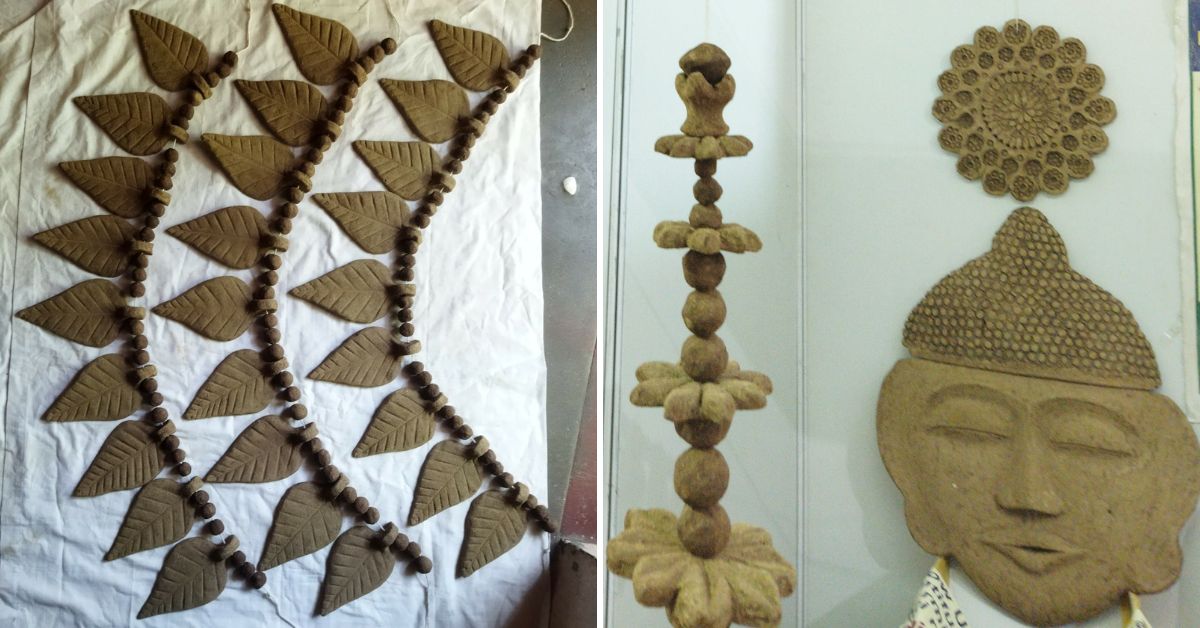
While growing up, Ganesan recalls the times when his family used to make small Ganesha idols using cow dung. “Those idols were mostly symbolic of Ganesha, hence were not as detailed as the ones I make. They were majorly made during festivities or during the beginning of harvesting. I found inspiration from it and developed the idea,” he says.
“Besides, I had seen how cow dung turns hard and solid once it dries under the sun. Dry dung cakes are still being used as fuel for cooking. It has a strong bonding property even without mixing it with any other ingredient,” he elaborates.
Around the time he switched to organic farming, Ganesan happened to attend a training programme where a scholar suggested ideas on utilising cow dung in different ways. “In fact, I conceived the idea after that training session and decided to make Ganesha idols for Vinayagar Chaturthi,” he adds.

The 60 idols he made sold out quickly. This encouraged Ganesan to take his art to the next level. “I started experimenting and added more variety of products every year. By selling the Ganesha idols, I received around Rs 12,000 in the first year. The next year, I added some new products and was able to garner around Rs 25,000, and around Rs 75,000 in the third year,” he says.
Ganesan adds, “But in the following two years the sales went down due to the pandemic. Now I am trying to amp up as the pandemic-induced restrictions have reduced.”
Utility items like kumkum boxes, spice boxes, pen stands, fruit stands, and decorative items like wall hangings, torans (decorative door hangings), chains, plaques with religious symbols, and faces of gods/goddesses are some of the items made using cow dung.
A six-foot tall Buddha statue made using 30 kg of cow dung is one of the masterpieces made by Ganesan.
A painstaking handmade process
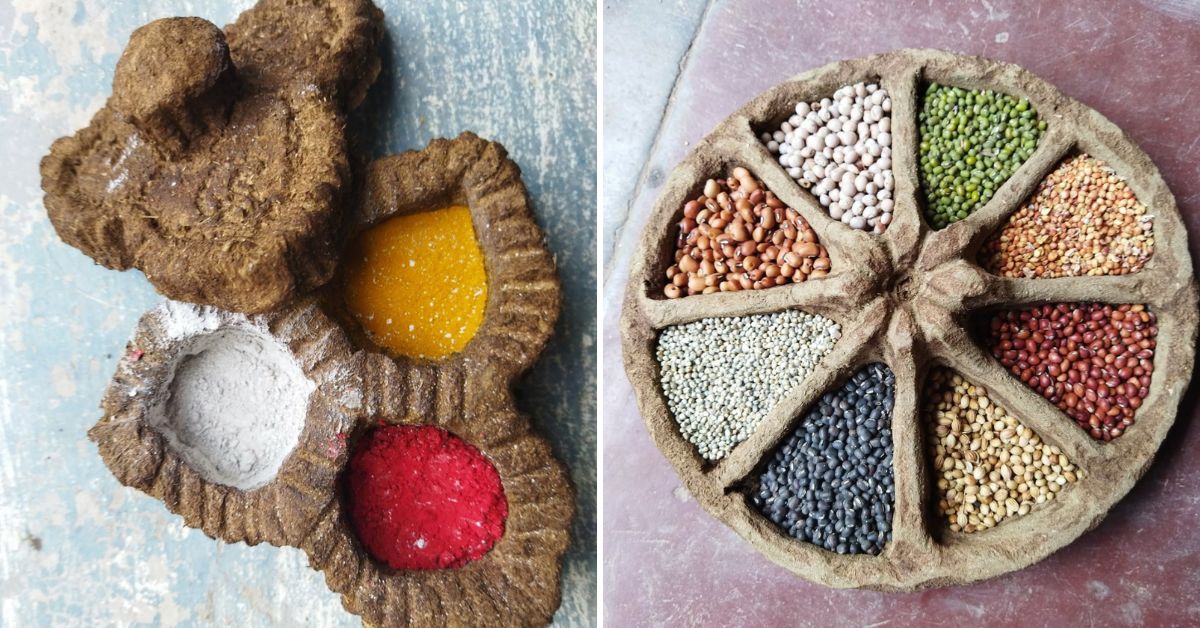
Each and every product made by Ganesan are unique as it is completely handmade. Though it’s made just using cow dung and cow urine, he says that the entire process requires a lot of time and patience. So it is difficult to mass-produce them.
“Fresh cow dung is used to make all the products. Once the dung is taken, the sculpting has to be done within 1–2 hours. After that, it has to be dried under the sun for several days according to the thickness of the product. Most of the products are kept for at least a time period of 20 days before dispatching it,” elaborates Ganesan. He adds that he also formulated a six-step process for bringing the products to perfection.
As the products need to be dried under the sun, he only works in those months when it doesn’t rain. “Humid weather could lead to the growth of worms or fungus in the raw material, which can affect the strength of the product. So, I don’t make them during the monsoons. The products turn out perfect only when they get good exposure to the sun,” he says.
It took him around five years to experiment with the art and to come up with a well-thought process, through trial and error method. “I could assure that all these artefacts — if maintained well under non-humid conditions — would last for at least 10 years,” he adds.
According to him, the best thing about cow dung artefacts is that they are 100 per cent organic, eco-friendly, and even recyclable.
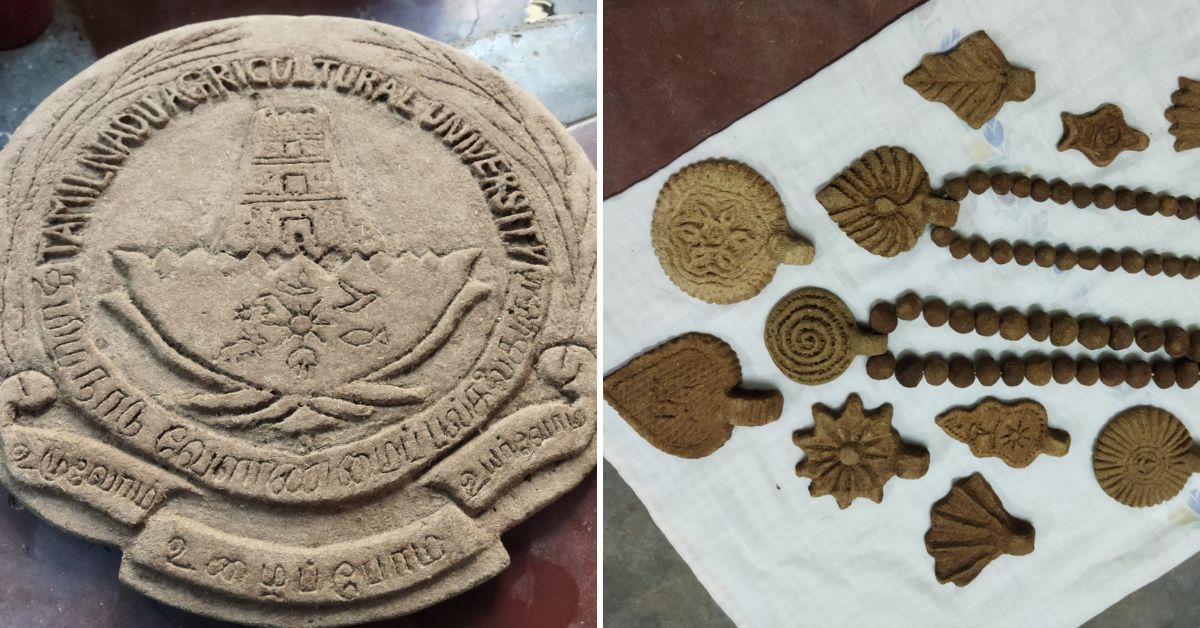
He elaborates, “Even if the product is disposed of after a few years, it would turn into manure. It can also be recycled and used as an organic powder, which can be mixed with water and sprayed on plants.”
J Suresh Kannan, a businessman from Madurai, bought a few products from Ganesan a few years ago. “I bought a Vinayagar idol, a pen stand, and a toran from him around two years back. They are still as good as they were at the time I bought them and I haven’t seen even a single crack on their surface. His art is very unique and I feel it requires more appreciation,” says Suresh.
The price range of the products starts from Rs 5 and goes up to Rs 3,000. “The cow dung cake is priced at Rs 5 and the costliest among my products is the Buddha statue,” says Ganesan, adding that most of his products are sold through expos.
“I don’t have a marketing strategy as such. Many people learn about my products through word-of-mouth and common connections. So far, I have received orders from across the state and even from other parts of the country,” says Ganesan who also conducts training on the craft.
For order-related queries, contact Ganesan at 99420 85413.
Edited by Pranita Bhat
If you found our stories insightful, informative, or even just enjoyable, we invite you to consider making a voluntary payment to support the work we do at The Better India. Your contribution helps us continue producing quality content that educates, inspires, and drives positive change.
Choose one of the payment options below for your contribution-
By paying for the stories you value, you directly contribute to sustaining our efforts focused on making a difference in the world. Together, let's ensure that impactful stories continue to be told and shared, enriching lives and communities alike.
Thank you for your support. Here are some frequently asked questions you might find helpful to know why you are contributing?


This story made me
-
97
-
121
-
89
-
167




